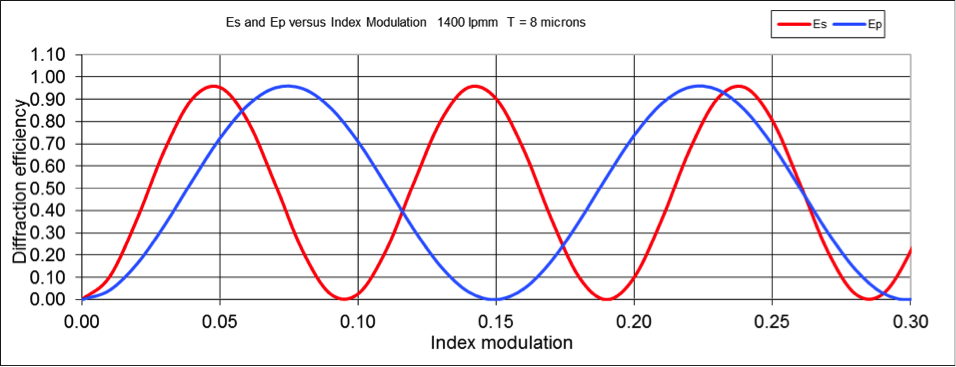Volume Phase Gratings have many advantages over SR or surface relief gratings. However they cannot break the laws of physics. Gratings with low dispersion and a diffraction angle under 30° have low polarization dependency.
Gratings made for high dispersion with an angle of incidence greater than 30° will start exhibiting polarized dependent losses (DPL). S and P polarized light begin to diffract at different efficiencies depending on the index modulation of the grating medium as seen in this graph for a 1400 l/mm grating at 840 nm.

By adjusting the index modulation of the grating medium, a grating can be enhanced to favor S polarized light, P polarized light or for average polarization. A grating can also be manipulated so that there is almost no diffraction of a particular polarization.
At angles above 36° the PDL of the grating starts to become excessive and the peak efficiency starts to fall below 80% as seen in the figure below.


